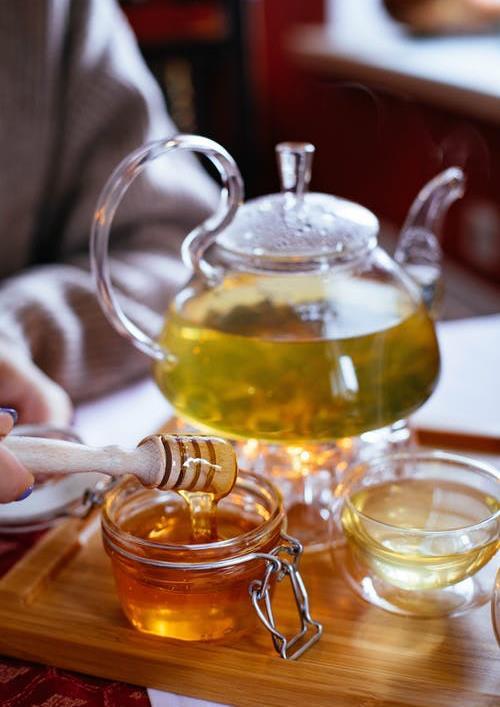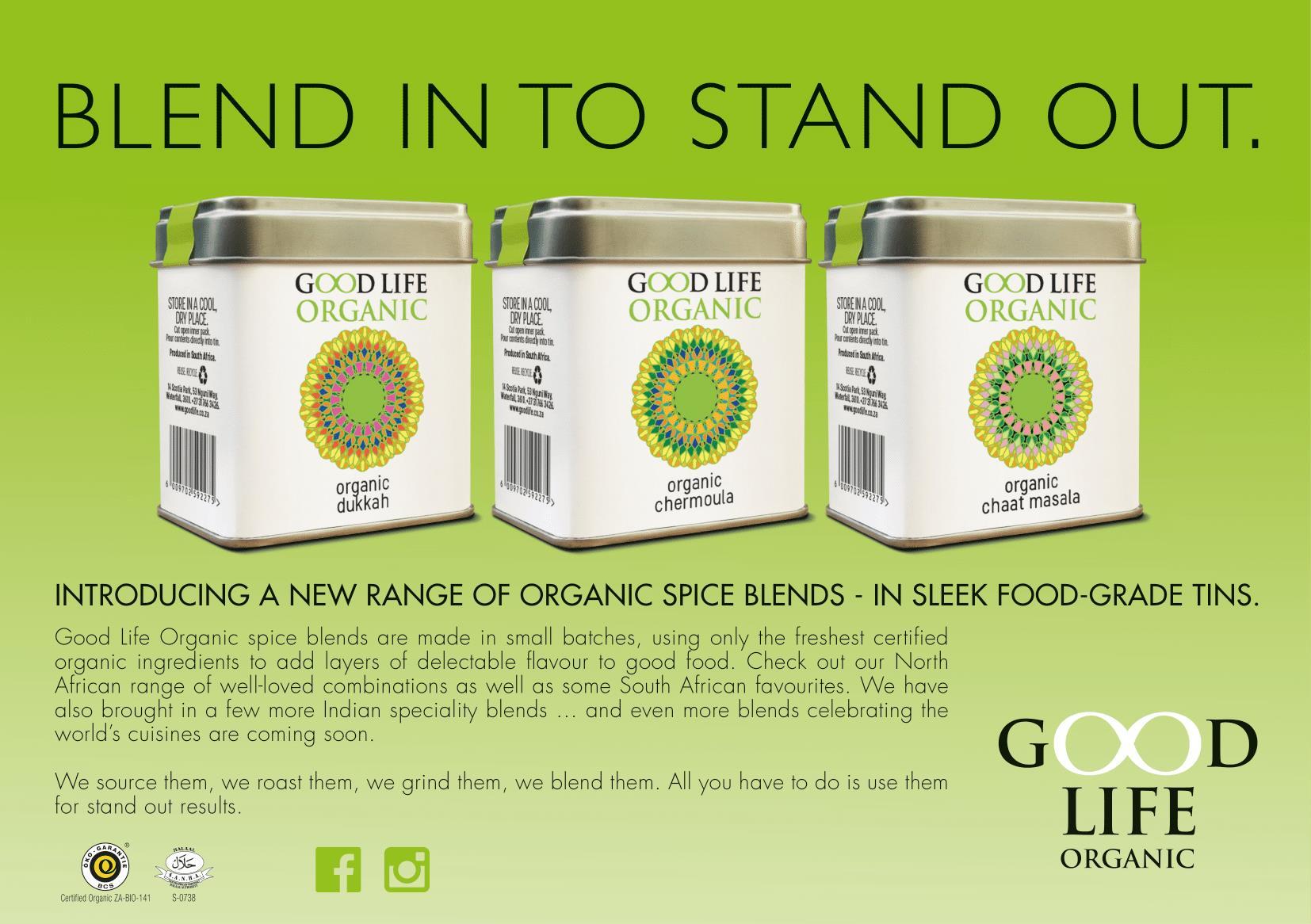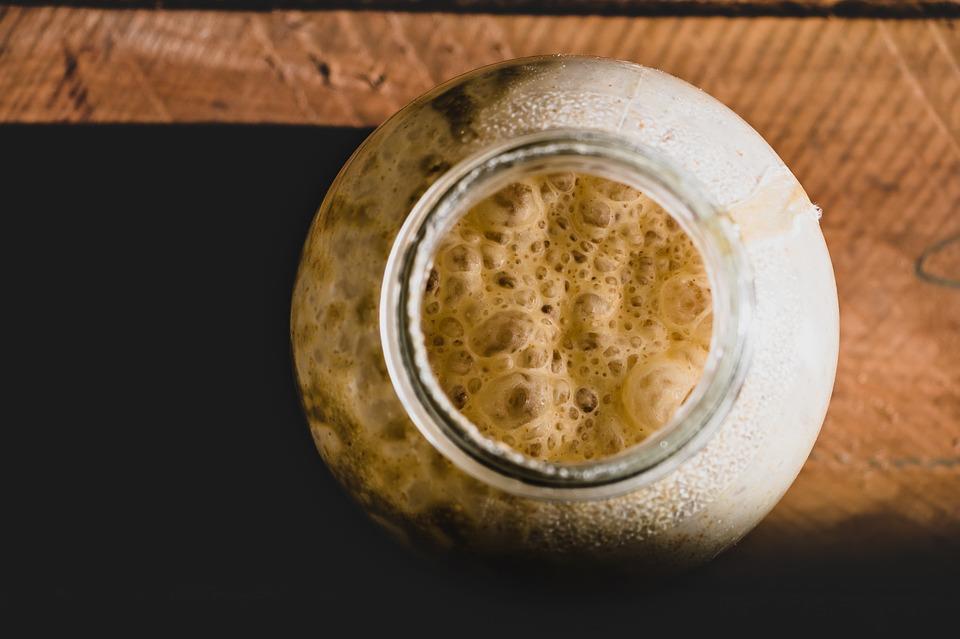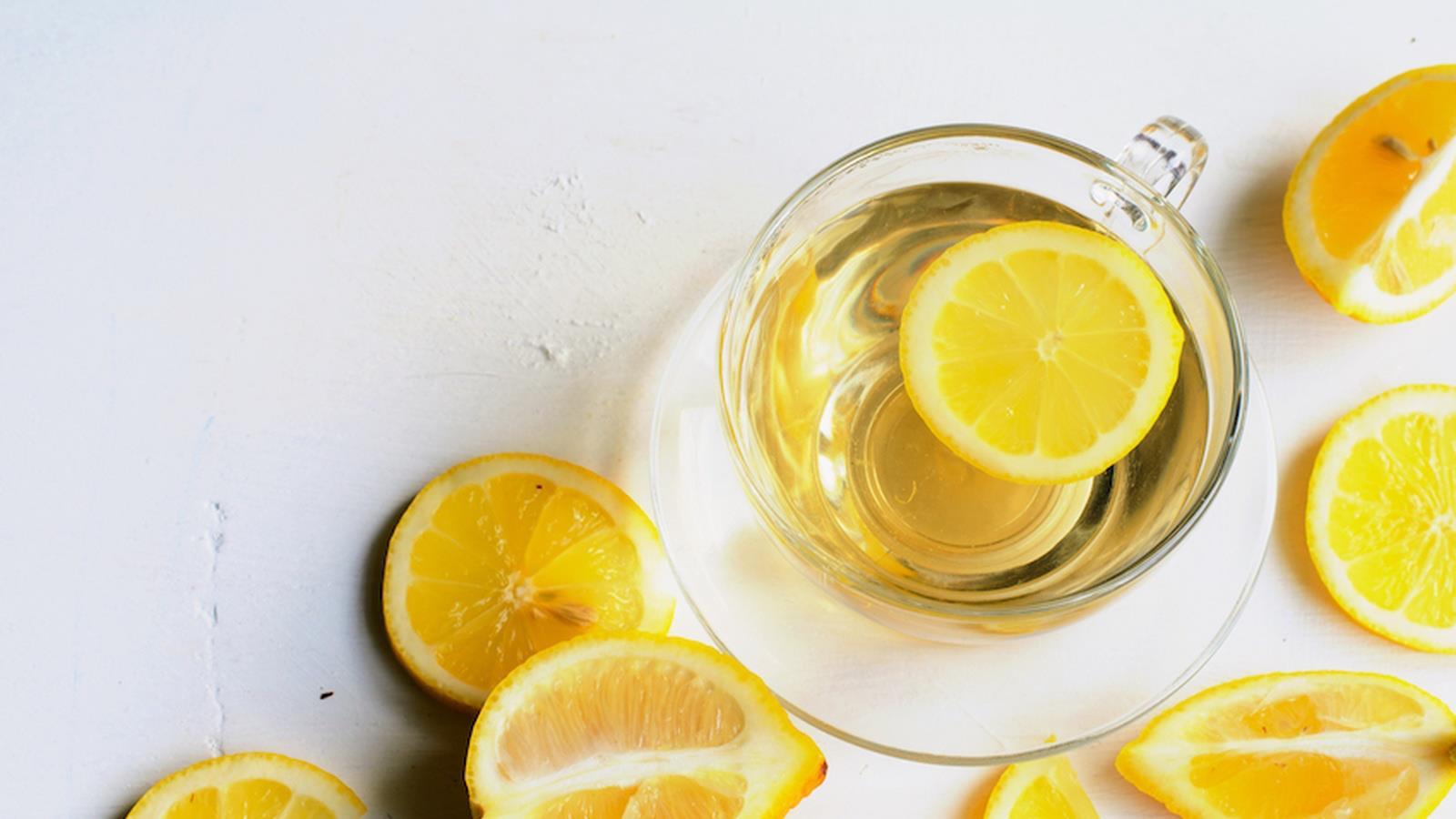
17 minute read
The Best Natural Sw eeteners to U se
The Best Natural Sw eeteners to Use
Article by James Colquhoun courtesy of www.foodmatters.com, images herein from the original article
Advertisement
Life is certainly a little sweeter wi th sugar. However, the levels of sugar that our society is currentl y consuming is a direct reflecti on of our global chronic health concerns. On average, we’re only supposed to consume 25-36g of adde d sugar a day (this doesn’t include the beau tiful natural sugars in fruits), but realistically the average Am erican consumes 71.14g each day - that ’s 17 whole teaspoons!
Excessive sugar consumption is playing a major role in overall health; it may cause glucose levels to spike and plummet, increase the risk of diabetes, obesity, and heart disease, impact immune function, lead to chromium deficiency, accelerate aging, cause tooth decay and gum disease (which can lead to heart disease), affect cognition in children, increase strength, and take the place of important nutrients.
But doing away with sweet flavors altogether doesn’t have to be an option. Here are our picks of the best natural sweeteners to use.
Maple Syrup
One of the most-reached-for sweeteners in the Food Matters kitchen is maple syrup. I n it’s purest form, when taken from the sap of the maple tree, it’s taste is enough to sweeten even the Conscious Life Magazine
most bitter of dishes with a lovely homely flavor. Not only is it a beautiful sweetener, but when enjoyed in balance it can actually have some incredible health benefits. I t contains calcium, potassium, iron, zinc, and manganese, alongside at least 24 antioxidants. Plus, some active compounds in maple syrup have been shown to help reduce the growth of cancer cells and may slow down the breakdown of carbohydrates in the digestive tract. But be cautious, the pure form isn’t to be confused with maple-flavored syrup, which is sugar syrup with chemically derived maple flavors.
Coconut Sugar
A simple swap for any sweet recipe is coconut sugar. This is still to b e consumed in moderation (and can usually be used in half the amount that any recipe calls for), but carries a lot more nutrients than refined white sugar. I t is made from the dehydrated sap of the coconut palm and retains nutrients such as the minerals iron, zinc, calcium, and potassium, along with some shortchain fatty acids like polyphenols and antioxidants.
Dates
This fruit is one of the most nutrient-rich sources of natural sugars and can be used in anything from baking and smoothies to salads and syrups. This high-fiber fruit is perhaps best known for its powerful digestive properties, but it’s good for so much more than that. Dates have a widespread nutrient profile and are packed with various antioxidants, alongside helping regulate cholesterol levels, strengthening the nervous system, and improving bone health.
Honey
Another syrupy sweetener we often reach for is honey. This option is naturally delicious and I love it for the abundance of health and antimicrobial benefits it offers. Manuka honey for instance, a native honey produced by bees who pollinate the manuka bush, is known for wound healing, oral health, and soothing sore throats. As honey becomes more widely used for health purposes, emerging studies are confirming what we already know; that the antibacterial benefits are extremely potent and it’s a powerful last-resort medication.
Because it’s an animal byproduct, honey is technically not vegan - so many not be a suitable option for all. We also need to be cautious of sustainability. Bees are required for pollination, to ensure our ecosystems are thriving, but our growing demand for the product is leading to a honey bee decline. To meet the growing demand, industrial bee farming has become the norm the US has seen over a 40% decline in honey bees. Supporting local, sustainable beekeepers is one of the best decisions you can make.
Monk Fruit Powder
I love getting my sweeteners from sources as close to nature as possible, so monk fruit is also a great option I keep on hand. The extract is 150 to 200 times sweeter than sugar and contains zero calories, zero carbohydrates, zero sodium, and zero fat. Most noticeably, it doesn’t raise blood glucose levels, making it a popular option for diabetics and health-conscious foodies. The sweetener is derived from the native Chinese plant, and many properties have been used in Traditional Chinese Medicine for centuries. Monk fruit powder is often available a t your local health food store, so if you’re looking to branch out this is a wonderful option. Conscious Life Magazine Conscious Life Magazine

Stevia
I’m not personally a fan of stevia, as it is often heavily processed and can taste bitter to me. Many of the readily available alternatives are also packed with artificial additives too. But some people like th is option and it can provide sweetness without spiking blood sugar levels. Stevia is a nonnutritive sweetener, and while the zero-calorie approach may appeal to some, it’s also important to note that it lacks any good nutrients too. The lowered glucose and insulin levels found in clinical studies were not due to the compounds of stevia, but rather the elimination of standard sugar from the diet.
No matter the recipe, you can be sure that there’s a way you can improve on the nutritional benefits and begin to work on undoing the lifetime of damage caused by refined white sugar sugar. If you’re looking to discover more ways you can clean up your meals, or want to get back to the nutrition basics, I've created this freemasterclass just for you.




M icrobial Secrets of Sourdough

I mage by Thomas Bock By Bob Holmes 08.12.2020 courtesy of www.knowablemagazine.org
It all starts with a community teemi ng with yeasts and bacteria — but what ’s really happening? Scientists peer into thos e jars on the kitchen counter to find out.
The Covid-19 pandemic has tightened our social circles and narrowed the scope of our lives in ways no one imagin ed just a year ago. But the lockdown also brought an unexpected solace: Everyone, it seems, turned to baking sourdough bread. Social media has been overflowing with photos of frothy sourdough starters — many of them named, like a family pet — and the freshbaked loaves that result. And though peak sourdough may have passed, many a fridge still contains that jar of starter.
Most home sourdough bakers know that their starter contains a vibrant herd of microbes, which leaven and flavor their bread. But where conventional breads rely on a single species of baker’s yeast — the microbial equivalent of a cattle ranch — sourdough is more like the Serengeti, a diverse ecosystem of interacting yeasts and bacteria. The nature of that ecosystem, and hence the flavor of the bread, is a profound expression of a particular time and place. Scientists are beginning to discover that the microbes in a sourdough depend not just on the native microbial flora of the baker ’s house and hands, but also on other factors like the choice of flour, the temperature of the kitchen, and when and how often the starter is fed.
University. But even that limited knowledge is enough to cast light on a diverse, tumultuous microbial world — and provide a few hints to home bakers hoping to up their game. (We probably still have plenty of time to be baking, alas.)
Rise of the microbes
Mix flour and water in a bowl and you have papier-mâché paste. But a lmost immediately, yeasts and bacteria from the environment and the flour itself begin feeding on the sugars in the flour, explains Erin McKenney, a microbial ecologist also at North Carolina State who has studied the events that unfurl as a sourdough starter forms. At first, just about any microbe can grow on this rich, new energy source, including spoilage bacteria. (That’s why brand-new sourdough starters often go through a black, putrid-smelling phase.)
But soon, conditions begin to change. One group of those early colonists begins to acidify the starter. By Day 3, these so-called lactic acid bacteria — named for one of the main acids they produce, which is also found in yogurt, cheese and other fermented milk products — have made the starter so acidic that many of the early colonists can’t survive, leaving only the lactic ac id bacteria and a few acid-tolerant yeasts. This lactic acid, together with vinegary-smelling acetic acid, gives sourdough its characteristic tang.
I t may also improve the nutritional quality of the bread, says microbiologist Guylaine Lacaze of the Belgian bakers’ supply and consulting company Puratos (she is aware of four as-yetunpublished studies on the topic). The increased acidity activates an enzyme, phytase, that makes minerals like calcium and phosphatemore available, she says.
By Days 10 to 14, the starter has settled into a stable state where yeasts and lactic acid bacteria grow vigorously, the yeasts producing enough carbon dioxide to leaven a loaf of bread. The starter is ready to use.
But the fact that new starters settle down within a couple of weeks doesn’t mean that they all end up with the same set of microbes. I n one recent study, Madden and her colleagues shipped bags of the same flour to 18 professional bakers around the world, who then used the flour to create starters in their own kitchens using identical techniques. About a month later, the bakers and their starters convened in Belgium, where researchers used DNA sequencing to identify the microbes in each starter.
Even though all th e bakers started with the same flour, th eir starters were all different. Most contained various strains of common baker ’s yeast, Saccharomyces cerevisiae, along with a host of other yeasts in varying proportions, they found. The starters also contained a wide range of lactic acid bacteria, mostly in the genus Lactobacillus — though once again, the details varied widely from one starter to the next. Most microbes appeared to have come from the flour — a different draw each time — though a few also originated with the baker ’s hands or kitchen.
Other research groups in Europe have seen similar diversity. “My conclusion is that every sourdough is different,” says Marco Gobbetti, a microbiologist at the Free University of BozenBolzano in Italy. I ndeed, he suspects, a constant flux of species may be the norm for any given sourdough over time, though what little evidence is available is still equivocal. This casts some doubt on treasured heirloom sourdoughs, someof which have been passed down for Conscious Life Magazine Conscious Life Magazine
But even if every sourdough is different, might they fall into several distinct groups based on the microbes that are present, in much the same way that terrestrial plant communities can be grouped into grasslands and forests despite a changing mix of species? The answer to that question might be coming soon. Elizabeth Landis, a microbiologist at Tufts University in Boston, and her colleagues (including Madden and McKenney) identified the microbes in 560 starters submitted by bakers around the world, then looked for recurrent groupings of microbes. Some species do appear to co-occur frequently, they found, perhaps because they specialize in feeding on distinct sugars. The yeast Kazachstania humilis, for example, can’t use the sugar maltose, which is therefore available for the lactic acid bacteria. (The paper describing these results is still under review, so Landis isn’t sharing details just yet.)
Each microbial community seems to produce its own unique flavor profile, too, McKenney says. Some produce more lactic acid, which gives a yogurty flavor; others yield a sharper, more vinegary note from lots of acetic acid. And because each species of microbe has slightly different metabolic pathways, each is likely to add other flavorful metabolic byproducts to the mix — a b ig reason sourdough tends to have a subtler, more complex flavor than ordinary bread. “You could compare it to one single flower compared to a nice bouquet of different flowers. The complexity of all these d ifferent compounds is what you find in a sourdough bread,” says Karl De Smedt, who maintains a library of sourdough starters at Puratos.
Care and feeding
Not everyone agrees that sourdough microbial communities are so variable. I n commercial bakers’ sourdoughs, which are fed daily or even more often, the microbes always have plenty of food. That creates a race, with th e fastest-reproducing microbes dominating over time, says Michael Gänzle, a food microbiologist at the University of Alberta, Canada. I n the long run, he says, the winners are the yeast Kazachstania and the lactic acid bacterium Lactobacillus sanfranciscensis (recently renamed Fructilactobacillussanfranciscensis). That’s not necessarily good news for the resulting bread: L. sanfranciscensisgrows fastest because it has one of the smallest genomes among lactic acid bacteria, which means it has fewer metabolic pathways and thus fewer flavor-producing by-products than other bacteria, Gänzle says. (Score one for home sourdoughs,which Landis says might bemore diverse.)
But the flavor of a sourdough bread depends on more than just the species of microbes present in the starter. “You can have really different sourdoughs even if the microflora is the same,” says Lacaze. “I t depends also on the recipe of the sourdough, the parameters of the culture. ” Stiffer starters — that is, those made with a lower proportion of water — trap more oxygen within the dough, and this encourages lactic acid bacteria to produce sharper-tasting acetic acid; in runnier starters, the same bacteria produce softer-tasting lactic acid.
Temperature matters, too. Lactic acid bacteria do best in relatively warm conditions, for example, so fermenting in a warm kitchen makes for a sourer dough, while cooler conditions lead to more of the fruity flavors produced by the yeast. Moreover, lactic acid bacteria, despite what you’d think, aren’t fond of highly acid environments. Home bakers who leavean acidic Conscious Life Magazine Conscious Life Magazine
starter in a cold fridge for weeks between bakings can find they end up with a blander bread that lacks the distinctive tang contributed by the bacteria. (Pro tip: I f you’re going to leave your starter in the fridge for longer than a week, make sure to refrigerate it immediately after adding fresh flour, when it’s least acidic. That, says Lacaze, will help the lactic acid bacteria survive the prolonged cold to acidify the rising dough.)
One of the biggest ways that bakers can influence the flavor of their sourdough bread is through their choice of flours for the starter. To demonstrate this, McKenney and her team made four starters each from 10 different grains. Because grains differ in the mix of sugars they make available to sourdough microbes — corn, for example, lacks a starch-digesting enzyme that creates maltose — they might lead to different sets of microbes and, hence, different flavors. And that’s exactly what McKenney found (again, the results are not yet published). Starters made from amaranth flour tended toward meaty, toasty aromas. Those made from teff (an African grain) and sorghum gave fermented smells, while emmer and buckwheat gave more vinegary starters.
So far, McKenney and other sourdough researchers have taken only baby steps toward designer sourdoughs: Their science has not yet caught up to folk wisdom. “People would like to know step by step: ‘How do I make the end product I desire?’” McKenney says. “We can’t begin to offer anything that’s better than common baking knowledge or the best practices you learn from blogs or talking to friends. ”
More answers could be coming soon, thanks to new citizen-science initiatives. McKenney, Madden and their colleagues run the Wild Sourdough Project, which invites home bakers to experiment with flours and growing conditions and report their results. Similarly, Puratos has launched the Quest for Sourdough, where anyone from newbies to professionals can register their sourdough. Those with particularly interesting or unique starters might be invited to submit them to Puratos’s sourdough library for further analysis.
But sourdough is interesting to more than just bakers. Sourdough and other food fermentations such as those that give us cheese, sauerkraut and kimchi provide relatively simple, easy-tohandle model ecosystems for studying microbial ecology more generally. “ There’s lots of insights you can gain from studying fermented foods that you can then transfer to more complex microbial communities as well,” says Paul Cotter, a microbiologist at the Teagasc Food Research Centre in I reland, and co-author of an article on food microbiology in the Annual Review of Food Science and Technology.
Sourdough offers an additional benefit, especially relevant in pandemic times when the microbial world seems so full of threat. “Sourdough is this one space where we all agree, as a society, that microbes are helping us do wonderful things,” Madden says. “If you love sourdough, you love wild microbes in our lives. ”
Editor's note: This story was updated on August 13, 2020, to correct an error in the authorship of a study. The study, on the microbial diversity of sourdough starters originating from identical bags of flour, should have been attributed to Anne Madden and hercolleagues, not Erin McKenney and hercolleagues, as was originally stated. Editor’s note: This story was updated on August 18, 2020, to correct an error. The original stated that baker’s yeast could not use the sugar maltose. It can, although several other yeasts common in sourdough, such as Kazachstania humilis, cannot. Conscious Life Magazine Conscious Life Magazine
MISO EGGPLANT WITH BUCKWHEAT TABBOULEH by Ivette Rieksts courtesy of www.foodmatters.com

The Food Matters soul-warming, tummy-filling tabbouleh is made from nothing but nourishing ingredients and paired with miso-glazed eggplant it makes the perfect dinner for the family (and is just as tasty for lunch tomorrow)!
Ingredients Miso Eggplant
• 2 medium eggplants • 1 tablespoon apple cider vinegar • 1½ tablespoons maple syrup • ½ tablespoon white miso paste • 1-inch fresh ginger, grated • 1 teaspoon sesame oil
Tahini Cream
• 1 tablespoon hulled tahini • 2 tablespoons coconut yogurt • Pinch of unrefined sea salt
Buckwheat Tabbouleh
• ½ cup buckwheat groats • 1 cup water • 1 cup broccoli, finely chopped • ¼ bunch parsley • 1 scallion, sliced • 1 tablespoon sesame seeds • ½ tablespoon extra virgin olive oil • ½ lemon, juiced 3. I n a bowl, add apple cider vinegar, maple syrup, miso paste, grated ginger, and sesame oil. Whisk until combined. 4. Drizzle the miso glaze over the eggplants and place in the oven to bake for 25 minutes. 5. While the eggplants are cooking, rinse the buckwheat under cold water. Bring to a boil and then reduce to a simmer. Place a lid on the saucepan and let the buckwheat cook for 10 minutes. Drain the buckwheat. 6. To make the tabbouleh, in a mixing bowl, combine the cooked buckwheat, broccoli, parsley, scallion, sesame seeds, a drizzle of olive oil, and lemon juice. Stir to combine. 7. Prepare the tahini cream by whipping the tahini, coconut yogurt, and a pinch of sea salt with a fork or a whisk. 8. Once the eggplants are soft and caramelized, remove from the oven. Divide all of the food into two portions. Serve eggplants on a bed of buckwheat tabbouleh and add a dollop of tahini cream.
Method:
1. Preheat the oven to 350°F (180°C) and line a baking sheet with parchment paper. 2. Cut eggplants in half and score a crosshatch pattern on the white flesh. Place on the baking sheet, white side up, and set aside. TIP: Soak buckwheat overnight or for 4 hours before cooking in 3 - 4 times the amount of warm water. Rinse and drain buckwheat before use. This activation process breaks down the phytic acid that the body can have trouble digesting.














